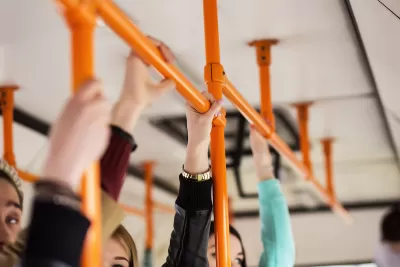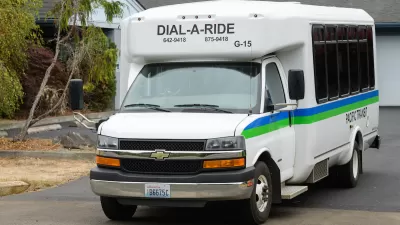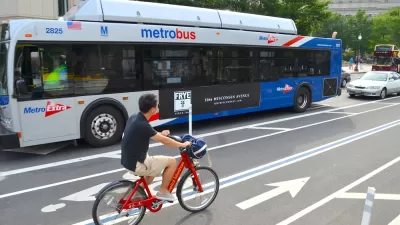Contrary to some arguments, public transit networks with higher government subsidies have higher ridership and more farebox revenue.

New research indicates that publicly subsidized transit systems are more efficient, writes Kea Wilson in Streetsblog USA. Regions with the highest subsidies also generate the most revenue from fares.
In a fascinating recent analysis, researchers found that metro areas that received more government subsidies per capita were more likely to run buses and trains with lots of passengers on board, rather than running inefficient, wasteful routes with just a few heavily subsidized riders per vehicle.
The analysis debunks the common argument that government subsidies fail to improve transit systems. According to the researchers, other studies often fail to account for regional transit networks that utilize more than one agency. “Instead, the new study looks at the simple ratio between how many miles transit passengers in the region collectively travel and how many miles transit vehicles in that region collectively travel, giving a clear, easy-to-understand picture of how crowded (or empty) subsided buses and trains are likely to be.”
The study shows that government subsidies for transit “seem to provide a strong foundation for transit networks to thrive — and ultimately, make significantly more money at the farebox than they would without support.”
FULL STORY: Study: Subsidizing Transit Actually Makes It More Efficient

Alabama: Trump Terminates Settlements for Black Communities Harmed By Raw Sewage
Trump deemed the landmark civil rights agreement “illegal DEI and environmental justice policy.”

Study: Maui’s Plan to Convert Vacation Rentals to Long-Term Housing Could Cause Nearly $1 Billion Economic Loss
The plan would reduce visitor accommodation by 25% resulting in 1,900 jobs lost.

Why Should We Subsidize Public Transportation?
Many public transit agencies face financial stress due to rising costs, declining fare revenue, and declining subsidies. Transit advocates must provide a strong business case for increasing public transit funding.

Paris Bike Boom Leads to Steep Drop in Air Pollution
The French city’s air quality has improved dramatically in the past 20 years, coinciding with a growth in cycling.

Why Housing Costs More to Build in California Than in Texas
Hard costs like labor and materials combined with ‘soft’ costs such as permitting make building in the San Francisco Bay Area almost three times as costly as in Texas cities.

San Diego County Sees a Rise in Urban Coyotes
San Diego County experiences a rise in urban coyotes, as sightings become prevalent throughout its urban neighbourhoods and surrounding areas.
Urban Design for Planners 1: Software Tools
This six-course series explores essential urban design concepts using open source software and equips planners with the tools they need to participate fully in the urban design process.
Planning for Universal Design
Learn the tools for implementing Universal Design in planning regulations.
Smith Gee Studio
Alamo Area Metropolitan Planning Organization
City of Santa Clarita
Institute for Housing and Urban Development Studies (IHS)
City of Grandview
Harvard GSD Executive Education
Toledo-Lucas County Plan Commissions
Salt Lake City
NYU Wagner Graduate School of Public Service





























